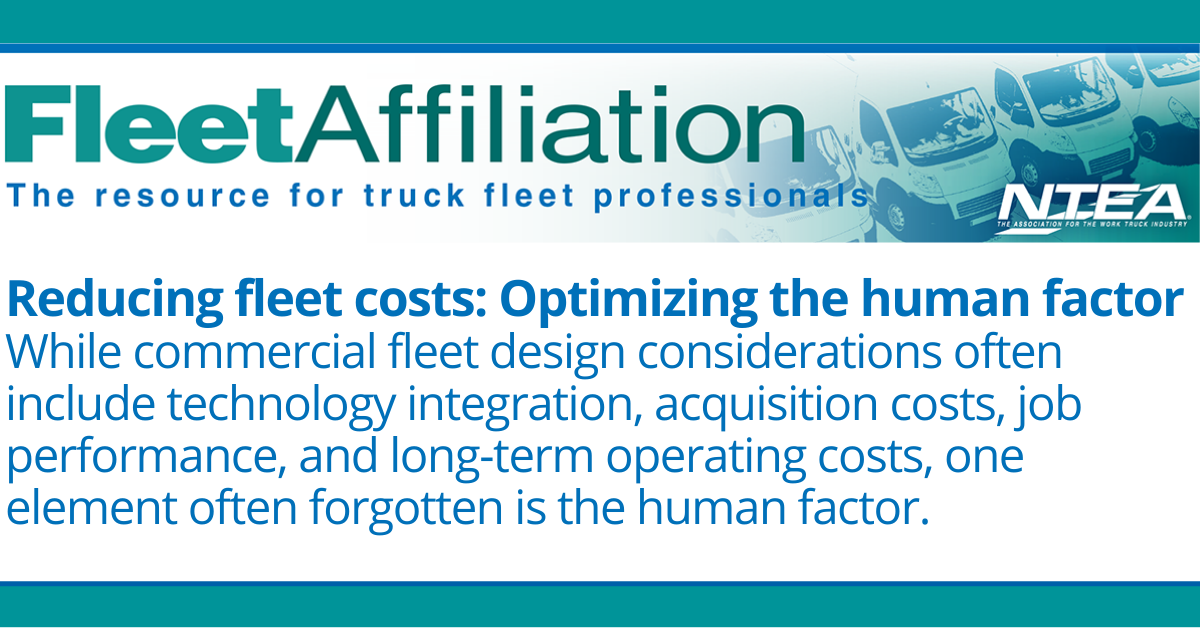
Published in April 2023 Fleet Affiliation.
While commercial fleet design considerations often include technology integration, acquisition costs, job performance, and long-term operating costs, one element often forgotten is the human factor. This step is key to understanding how vehicles are actually used on a day-to-day basis.
Anecdotally, an operator’s habits can impact fuel consumption by 30% while also influencing costs to the powertrain, brakes, suspension, and steering components. Optimizing these variables can greatly reduce the bottom line for long-term operating costs.
The opportunities
- Understand limiting factors. Before any behavior modification program can be implemented, it is important to understand limiting factors that may be in place, such as contractual labor agreements and upper management policies.
- Get support. Secondly, it is important to have full management support. At the most basic level, behavior modification begins with bilateral understanding. When operators feel empowered to affect the bottom line, they will most likely take a greater active role.
- Provide positive feedback. The two larger items that greatly affect the bottom line are fuel consumption and safety. These programs are most effective when operators receive positive feedback and possibly incentives. Providing real-time feedback can be an excellent tool that can coach operators in real-time.
- Integrate gamification. There are many telematics and vehicle-based reporting systems, and these can even be developed into gamification. This is where operators apply their behaviors to scoring or competition with others. To successfully implement this, the information must be used positively and constructively. The punitive use of driver behavior data will result in a failed program and create tensions among management, which must be avoided.
Bottom line payback
Taking the single easiest thing an operator can control will have multiple effects. Aside from the reckless operation of equipment, one of the easiest things an operator can control is fuel consumption. For immediate payback, consider starting a program to encourage thoughtful fuel consumption. Improved fuel economy is the primary benefit, however, there’s also opportunities to benefit from auxiliary benefits such as increased brake life, extended tire life, and reduced driveline wear.
Where to begin?
This all starts with management support, but the secondary and most critical element is operator support. This is where some give and take in vehicle design can be a strategy.
Vehicle spec writers strive to understand the operational elements of the needs and job requirements, and design vehicles suitable to the task. However, the human factor is often overlooked. Beyond assuring design meets functional requirements, consider creature comforts for the operator as well as features that improve vehicle aesthetics. When operators take pride in the equipment they use, they may operate differently – and this can positively impact the overall bottom line.
